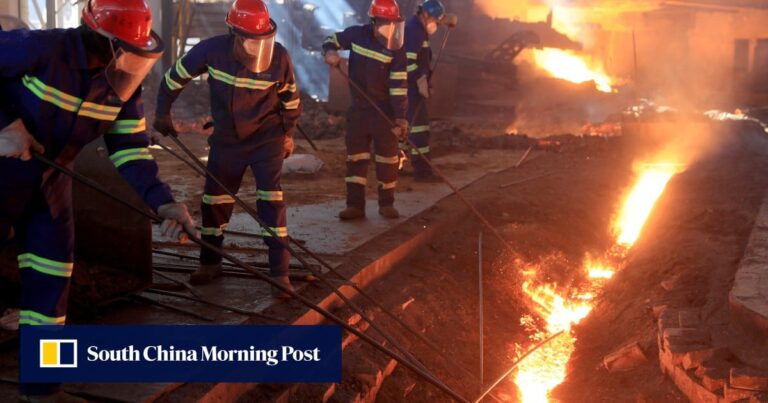The plant is expected to produce 600,000 tonnes of steel per year at its peak during the first phase, reaching 5 million tonnes during the final phase of expansion. Up to 3,000 workers will be employed during production in the first phase, with that number expected to double during the second phase.
The processing plant, about 200km south of the capital, Harare, is touted to be Africa’s largest integrated steelworks when fully operational. And that couldn’t come soon enough.
The Chinese Embassy welcomed the start of operations at the new factory, saying in a post on Twitter that it “marks an important step for Zimbabwe’s industrialization and modernization.”

In the future, the plant will contribute to the development of the country’s value chain by utilizing Zimbabwe’s abundant iron ore, chromium, coal, nickel and limestone to manufacture steel products. The raw materials are mined and processed locally and government officials say there are enough reserves to last for 100 years.
Tsingshan, the world’s largest stainless steel producer, also has other projects in Zimbabwe, including a ferrochrome smelting plant owned by subsidiary Afrochine Smelting in Selous, a village in Mashonaland West province, about 70 km west of Harare.
Ferrochrome is an intermediate product used as a raw material in the production of value-added materials such as stainless steel. Ferrochrome produced in Selous is used in the production of iron and steel at the Mvuma plant.
We are pleased that our iron ore is being mined locally in sufficient quantities and value added. We buy iron from South Africa and Kenya and will now export to them.
Zimbabwe’s President Emmerson Mnangagwa, visiting the construction site in March, said the change was coming as the country transitions from being a steel importer to an exporter.
“This iron ore has been there all this time but we didn’t know. We wondered why certain rocks were heavy and even used it to make foundations for our houses. Now we are using it to build our country.”
“Once production starts, it will create huge exports in huge quantities to various parts of the world,” the steelmaker said.
“Our project envisages the construction of the Gweru-Mvuma railway, upgrading the existing infrastructure (we will manufacture our own rail slippers) and taking value-added products all the way to the Indian Ocean in Mozambique. Stakeholders in the region are excited.”
Zimbabwe Foundry Institute chief operating officer Dosman Mangisi called the start of operations a “boost” for Zimbabwe’s steel industry.
“This is a dream come true for the Zimbabwean economy,” Mangisi said.
He said the ease of doing business in the country’s metal foundry industry would be improved due to easier availability of raw materials, which would have the effect of boosting the downstream and upstream sectors of the Zimbabwean economy.
“Now is the time for the country to step up recapitalization of its strategic sectors of steel and metal casting for both domestic consumption and export,” Mangisi said.
Many of the existing processing and beneficiation facilities in Zimbabwe and other African countries were built by European investors decades ago and are now outdated.
Welcoming the millions of dollars worth of investment from China, Mangisi said, “China has become Asia’s ambassador in Africa. This new milestone will boost confidence in the African economy.”
“The arrival of the Chinese brought with them efficient technology that transformed mineral processing in the African economy.”


